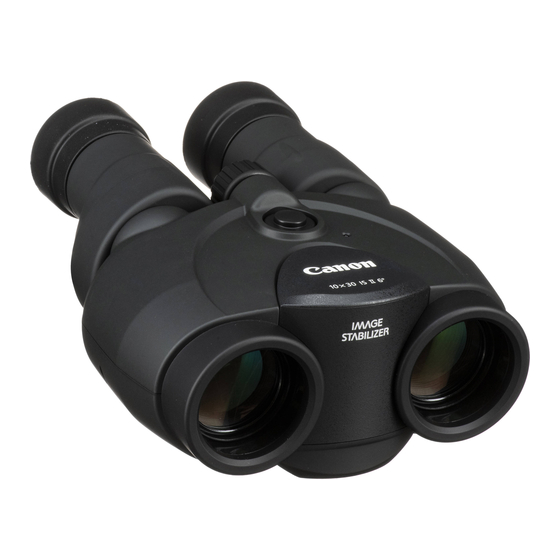Canon 10x30 IS II Manuel - Page 5
Parcourez en ligne ou téléchargez le pdf Manuel pour {nom_de_la_catégorie} Canon 10x30 IS II. Canon 10x30 IS II 25 pages. Technology guide
Également pour Canon 10x30 IS II : Brochure & Specs (8 pages), Brochure & Specs (8 pages), Manuel de l'utilisateur (2 pages), Manuel d'instructions (13 pages)

Basically binoculars are made up of the objective lenses for long
focal points, and the eyepiece lens, for short focal points.
The light from each to the two objective lenses which forms the
image of an object (Fig 4-a), passes through the barrel and hits
the eyepiece lens, which enlarges the image (Fig 4-b).
Create a telescope using two camera lenses
Attach a wide-angle lens to a telephoto lens. Without
shifting the optical axis, look through from the back of
the lens and adjust the distance between the two lenses.
You will eventually see a sharp inverted image.
This is the basic structure of a telescope. Put two of these side
by side and you have a pair of binoculars. In addition, the
longer the focal point of the telephoto lens and the shorter the
focal point of the wide-angle lens, the more the image will be
magnified. It is also possible to achieve focus by adjusting the
distance between the two lenses. It' s very simple.
Tested with the EF 300 mm f/4L and EF 24 mm f/2.8,
Objective lens
b
(Fig. 4)
the outcome was pretty obvious.
Prism Binoculars/Galileo Binoculars/
Porro Prisms/Roof Prisms
Eyepiece lens
a
